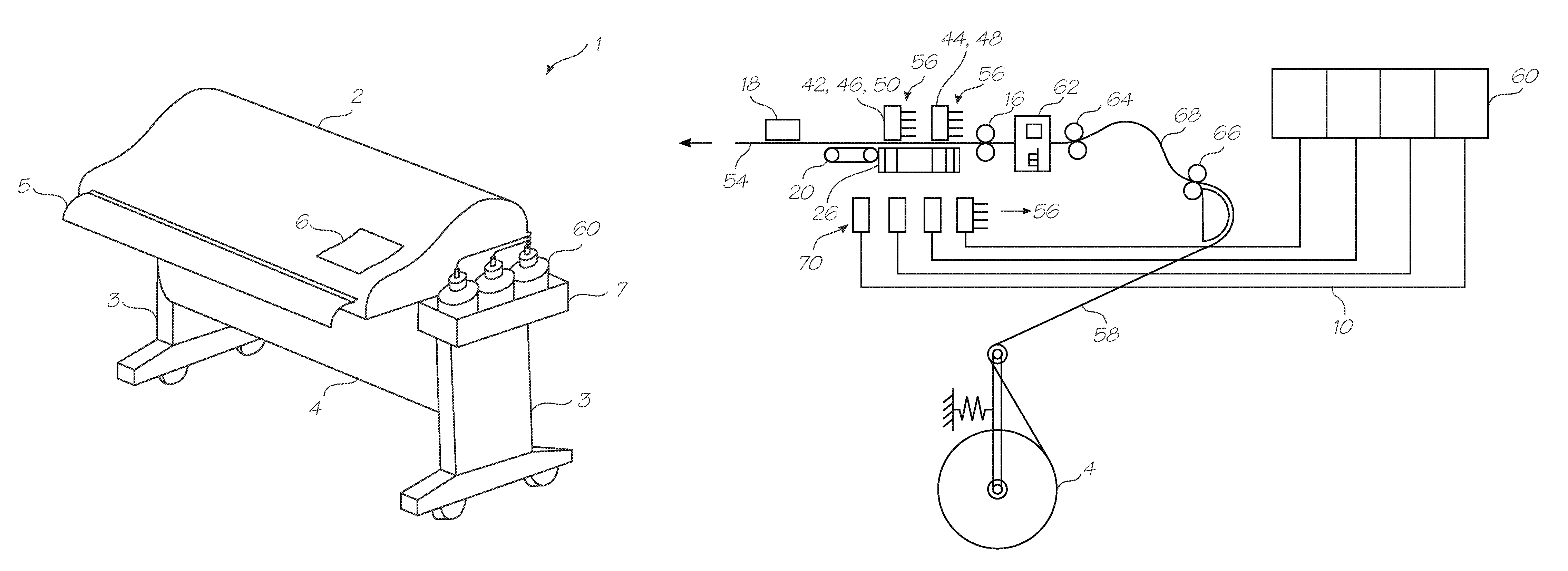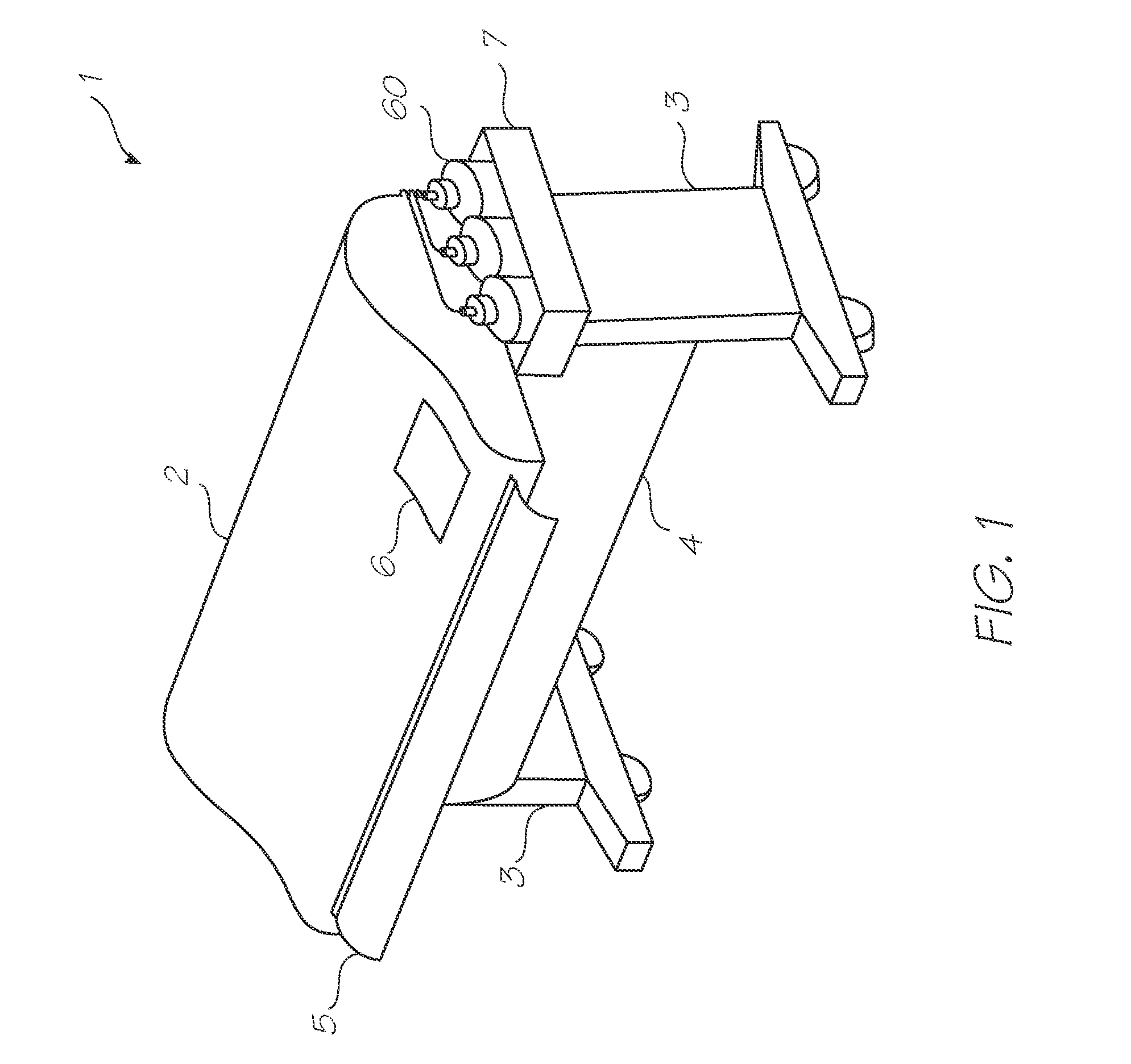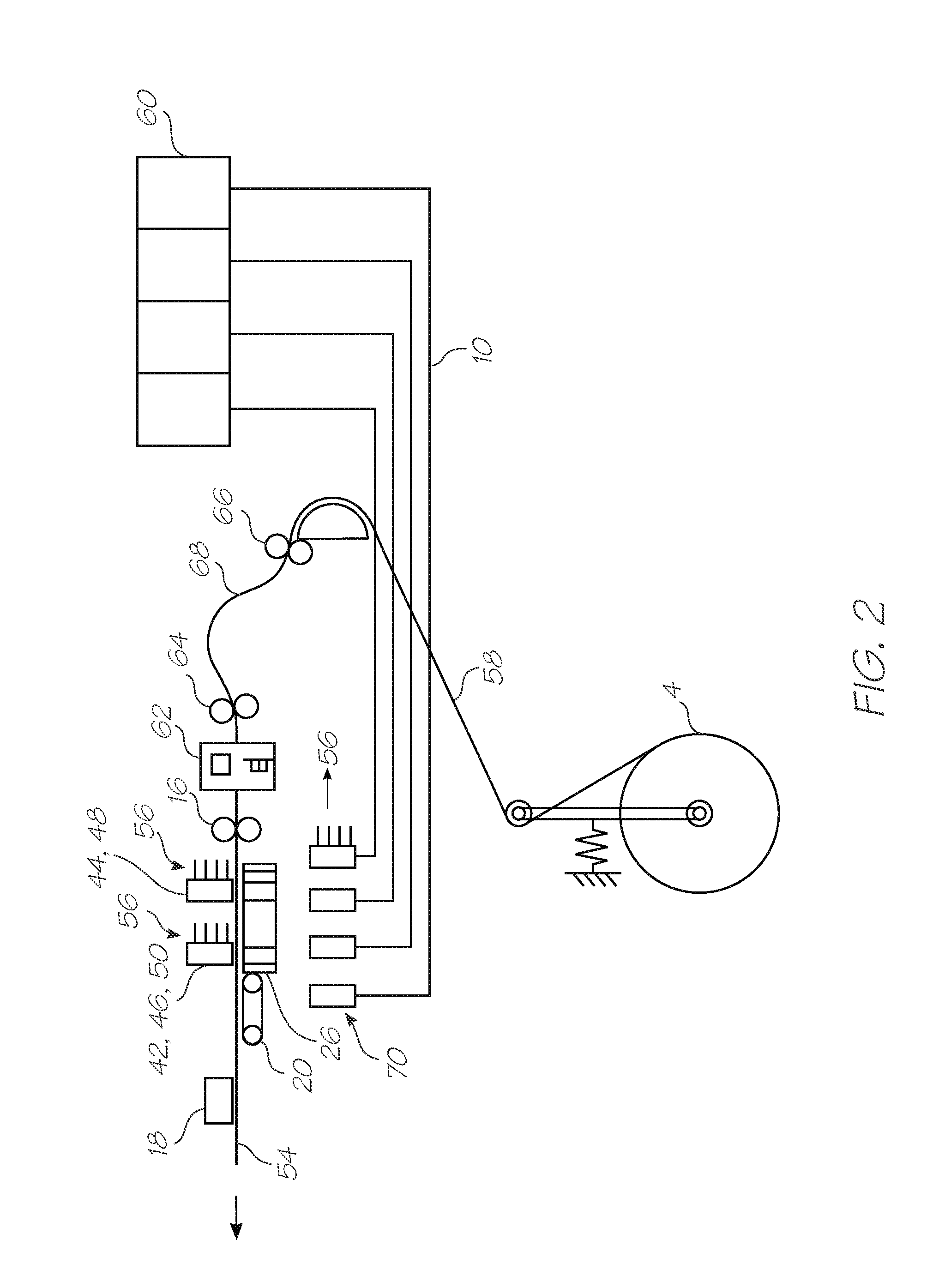Print engine with ink supply conduits extending from a long side of elongate printhead carriage
a print engine and ink supply technology, applied in printing, typewriters, other printing apparatus, etc., can solve the problems of excessive slowness of wide format printers, inability to meet the needs of most domestic and commercial environments, and inability to meet the needs of large-scale printing, etc., to achieve reduce pressure drop and flow constrictions, and achieve the effect of convenient and reliable hydrostatic pressure regulation
- Summary
- Abstract
- Description
- Claims
- Application Information
AI Technical Summary
Benefits of technology
Problems solved by technology
Method used
Image
Examples
Embodiment Construction
Overview
[0557]FIG. 1 shows a wide format printer 1 of the type fed by a media roll 4. However, as discussed above, for the purposes of this specification, a wide format printer is taken to mean any printer with a print width exceeding 17″ (438.1 mm) even though most commercially available wide format printers have print widths in the range 36″ (914 mm) to 54″ (1372 mm). The print engine (that is, the primary functional components of the printer) are housed in an elongate casing 2 supported at either end by legs 3. The roll of media 4 (usually paper) extends between the legs 3 underneath the casing 2. A leading edge 8 of the media 5 is fed through a fed slot (not shown) in the rear of the casing 2, through the paper path of the print engine (described below) and out an exit slot 9 to a collection tray (not shown). At the sides of the casing 2 are ink tank racks 7 (one only shown). Ink tanks 60 store the different colors of ink that are fed to the printhead modules (described below) v...
PUM
 Login to View More
Login to View More Abstract
Description
Claims
Application Information
 Login to View More
Login to View More - R&D
- Intellectual Property
- Life Sciences
- Materials
- Tech Scout
- Unparalleled Data Quality
- Higher Quality Content
- 60% Fewer Hallucinations
Browse by: Latest US Patents, China's latest patents, Technical Efficacy Thesaurus, Application Domain, Technology Topic, Popular Technical Reports.
© 2025 PatSnap. All rights reserved.Legal|Privacy policy|Modern Slavery Act Transparency Statement|Sitemap|About US| Contact US: help@patsnap.com



